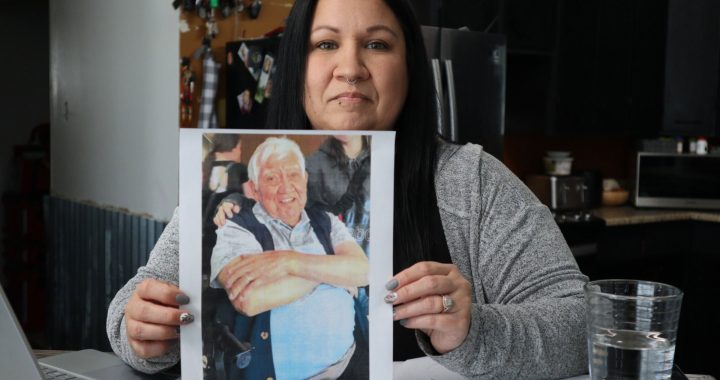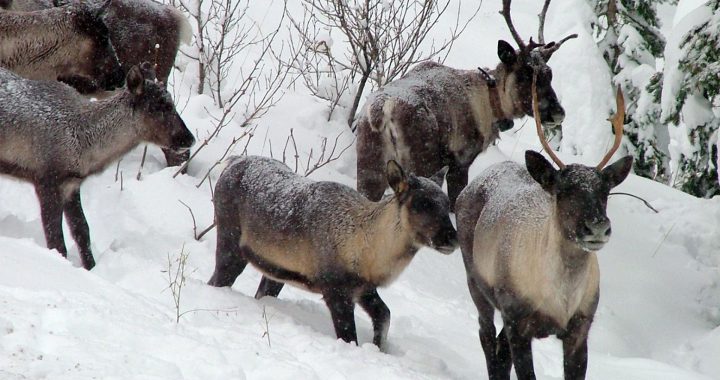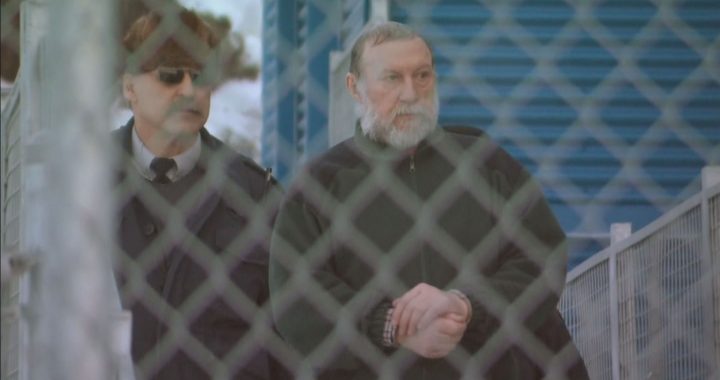Journey of Nishiyuu walkers' names now "etched" into "history of this country"
-A January walk that began in Quebec’s northernmost Cree community with a snow machine breaking trail ended 1,600 kilometres later with a crowd of people forming a path on Parliament Hill to make way for a group of Cree youth who had captured the attention of a nation.
By Jorge Barrera
APTN National News
OTTAWA–A January walk that began in Quebec’s northernmost Cree community with a snow machine breaking trail ended 1,600 kilometres later with a crowd of people forming a path on Parliament Hill to make way for a group of Cree youth who had captured the attention of a nation.
When the Journey of Nishiyuu walkers climbed the steps below the Peace Tower and turned, they saw a crowd of thousands gathered below them. RCMP and OPP crowd estimates ranged between 4,000 and 5,000 people.
The walkers, Jordon Masty, David Kawapit Jr., Stanley George Jr., Travis George, Johnny Abraham, Raymond Kawapit and Gordie Rupert had “etched” their names “into the history of this country,” said Assembly of First Nations National Chief Shawn Atleo.
The seven walkers, aged between 17 and 22, also met with Aboriginal Affairs Minister Bernard Valcourt on Monday evening for about 20 minutes on Parliament Hill.
Masty, 22, spoke for the group during the meeting and told Valcourt that First Nations people needed to be treated with equality.
“We just want to be equal, we just want Algonquin and Cree, all the reserves…to be known and to be treated equally,” said Masty. He responded to me in a positive way, so I respected that.”
Grand Council of Crees Grand Chief Matthew Coon Come was also in the meeting and said the walkers also spoke about the “deplorable living conditions” they saw in some of the communities that welcomed them with open arms along the way.
Valcourt’s office said the minister had accepted to visit Whapmagoostui First Nation, the journey’s beginning, this summer.
“The minister acknowledged their determination and commitment and he expressed a desire to engage youth in the key issues facing communities across the country,” according to an emailed statement from Valcourt’s office sent following the meeting.
The walk began on Jan. 17 in Whapmagoostui First Nation, a fly-in community of about 800 Cree people that sits just above the 55th parallel along the Hudson Bay coast in Quebec. By the time it ended, the seven walkers had been joined by over 200 people and the group marched 18 km from Chelsea, Que., to Parliament Hill on Monday.
The idea for the journey was spawned by a vision walker David Kawapit experienced during the protest fast by Attawapiskat Chief Theresa Spence who pitched a teepee on an island in the Ottawa River to demanding a meeting between First Nations leaders, the prime minister and the governor general.
Kawapit, 18, said part of the vision involved a wolf and a bear. He said the wolf symbolized First Nations people in Canada and the bear symbolized the government.
“A wolf alone can be easily killed by it, but with its brothers and sisters everywhere, it can call upon them and it can take down the bear with ease,” said Kawapit. “That is what became the unity part of this. We all need to stand together.”
With the Mohawk and Mi’kmaq flags flying in the breeze and the marchers joined by youth from other First Nations, part of that vision appears to be coming true.
Kathleen Jacko, 23, from the Algonquin First Nation of Kitigan Zibi, said she took the day off from work to walk with the Cree Monday.
“It’s once in a lifetime,” said Jacko, who joined the marchers on Sunday. “I thought, I have to do this.”
Spence said she was “overwhelmed” to have inspired the Cree youth.
Before marching onto Parliament Hill, the group stopped on Victoria Island, where Spence held her fast. The island sits in the shadow of Parliament Hill and the Supreme Court. There, the crowd grew to about 3,000, according to the RCMP.
Then, with the pounding of the drum reverberating off concrete and pavement, the crowd spilled out and across the Portage Bridge before flowing onto Wellington Street, engulfing it from curb to curb.
Chanting “Harper, Harper” and “Nishiyuu, Nishiyuu,” they reached Parliament Hill where they were met by a sea of people that parted before them, forming a narrow path up to the steps of the Peace Tower.
Many in the crowd gestured skyward after spotting what appeared to be an eagle soaring through the clouds.
The walk was also a healing journey for the walkers.
One of them, Raymond Kawapit, 20, lost his 17 year-old brother to suicide. A photo of his brother in a hockey uniform was pinned to his pull-over coat.
“I went to see my grandmother,” said an emotional Kawapit. His words translated from Cree into English by an interpreter. “(She said) when a person makes this journey, when they take that journey, that is where they find healing and that is why, for myself, I took this journey.”
Kawapit said he discovered along the journey that others also shared a similar grief.
“I thought I was alone in my grief when I first started out,” he said. “I found that they were grieving for their own family, for the brother that they lost.”
There was also Abby Masty, 11, who joined with the original walkers in honour of murdered and missing Indigenous women after she had a dream about walking down a trail on a sunny day out on the land.
“My mom asked me why I wanted to walk. I said, ‘I want to help people because of all the woman that are suffering and elders,” according to Masty, whose speech was read to the crowd by a woman standing beside her. “Women need to heal and as a nation we can heal together.”
While the journey began in -55 C temperatures that froze their food and turned their toques into helmets of ice, it ended with the sun burning through an overcast sky and temperatures hovering above 0C.
After the final speaker left the microphone, the drum again burst to life and a massive round dance, now synonymous with the Idle No More movement, encircled the lawn of Parliament Hill from edge to edge.
For the walkers, the end of this journey is now the beginning of another. And, they say, their lives have been forever changed.
“When we reached every town, I cried every time in my room,” said Gordie Rupert, 21. “What would happen if we didn’t start this journey? We have to keep our land, we have to. It is the only way we can live.”
@JorgeBarrera











And so they should be!
What a brave, humble, beautiful, determined, and a thousand other words I can’t think of. group of young people! My heart (with a drop or 2 of Cree blood in it) goes out to these future leaders & scholars, which they are destined to be!!
Lets try and make it so, somehow!
Maybe start by getting rid of Harper & his crew!
Megweetch!
Tom Duncan, Cutler, Canada. (Also the Dominican)
I know feel that all people should need to be treated as human equals as best as 1 person can treat equal among all!
It is with great HONOR that I salute these young PEOPLE who believed and therefore they pursued their VISION…the walk was not to seek recognition or to boast…it was done with HUMBLE PRIDE. As a Woodland Cree from northern Alberta..I am PROUD OF THESE YOUNG MEN..Aiy Hiy Nanaskomtin awow..(I thank you..)
I always marvel at the empty spaces here on APTN comments
This is just amazing to have almost 5000 people greet these incredible young people